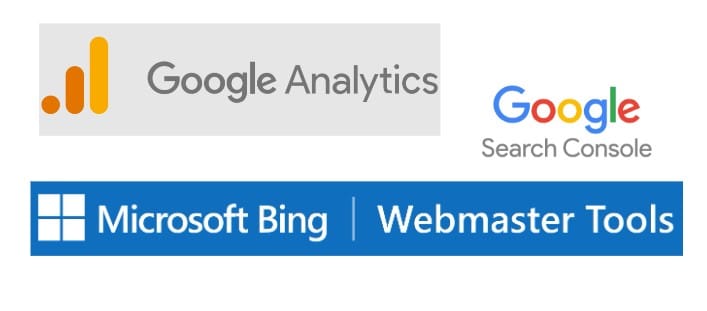Starting a new website is exciting but it can be daunting, especially when it comes to SEO. Understanding SEO for a new website is crucial to ensure your site ranks well in search engines like Google. This guide covers everything you need to know about optimizing your new site for search engines, from keyword research to on-page and off-page SEO strategies.
Understanding SEO for New Websites
SEO, or Search Engine Optimization, is the process of improving your website to increase its visibility in search engine results. For a new website, implementing effective SEO strategies is vital to attract visitors and establish an online presence.
Keyword Research: The Foundation of SEO
Keywords are the terms and phrases people search for online. Effective keyword research helps you understand what potential visitors are looking for and how to tailor your content accordingly.
Keyword Tools: Use tools like Google Keyword Planner, SEMrush, or Ahrefs to find relevant keywords for your niche.
Search Intent: Understand the intent behind search queries to create content that meets users’ needs.
Long-Tail Keywords: Target longer, more specific keywords that are less competitive and easier to rank for.
Keyword Research Tools and Metrics in SEO
Keyword research is essential for effective SEO, providing insights into what potential visitors are searching for and how to target those terms. Tools like Google Keyword Planner offer search volume data, competition levels, and cost-per-click (CPC) estimates. More advanced tools, such as SEMrush and Ahrefs, provide detailed analysis, including keyword difficulty, search volume, and competitive density.
Key metrics to focus on include search volume, indicating how often a keyword is searched, and keyword difficulty, which estimates the competitiveness of ranking for that keyword. Cost-per-click (CPC) reveals the monetary value of a keyword in paid search. Other important metrics are organic click-through rate (CTR), showing the percentage of searchers who click on an organic result, and competitive density, helping gauge the competition level in paid search.
By understanding and utilizing these tools and metrics, you can effectively target keywords to drive meaningful traffic to your new website.
Related: The Ultimate Guide to Long-Tail Keywords for eCommerce Success
On-Page SEO: Optimizing Your Content
On-page SEO involves optimizing individual pages on your website to rank higher and earn more relevant traffic. Key elements include:
Title Tags and Meta Descriptions: Craft compelling titles and meta descriptions that include your target keywords.
Headings: Use headings (H1, H2, H3) to structure your content and include keywords naturally.
Content Quality: Create high-quality, original content that provides value to your visitors.
Internal Linking: Link to other relevant pages on your site to improve navigation and SEO.
URL Structure: Use clean, descriptive URLs that include keywords.
Actionable Advice for Creating High-Quality Content
Creating high-quality content is vital for engaging visitors and improving SEO. First, understand your audience. Research their interests, needs, and pain points using tools and analytics. This allows you to tailor your content to address these aspects directly. Original and valuable content sets you apart, so avoid duplicating existing material. Offer new insights, data, or solutions that readers can’t find elsewhere.
Use clear and concise language. Avoid jargon and complex sentences, and keep paragraphs short for enhanced readability. Incorporating visuals like images, infographics, and videos can make your content more engaging and help explain complex concepts.
Optimizing for SEO is crucial; naturally integrate relevant keywords into your content, titles, headings, and meta descriptions. Regularly updating old posts with new information keeps them relevant and useful, ensuring your content remains a valuable resource for your audience.
Technical SEO: Ensuring Your Site is Crawlable
Technical SEO focuses on the backend of your website, ensuring that search engines can crawl and index your site effectively.
Mobile Optimization: Ensure your site is mobile-friendly, as Google uses mobile-first indexing.
Page Speed: Optimize images, use a content delivery network (CDN), and leverage browser caching to improve load times.
Sitemap: Submit an XML sitemap to Google Search Console to help search engines find your pages.
Robots.txt: Use a robots.txt file to control which pages search engines should crawl and index.
Schema Markup and Robots.txt
Two essential aspects of technical SEO are schema markup and the robots.txt file. Schema markup, a form of microdata, helps search engines understand your content better by providing additional context. This markup can enhance your search results with rich snippets, such as star ratings, product prices, and event dates, making your listings more attractive to users and potentially improving click-through rates.

The robots.txt file is used to manage and control how search engine bots crawl your site. Properly structuring your robots.txt file ensures that search engines index the most important pages of your site while excluding irrelevant or duplicate content. This file can prevent overloading your server with bot requests and ensure that your site’s crawl budget is used efficiently. Together, schema markup and a well-structured robots.txt file can significantly enhance your site’s visibility and performance in search engine results.
Off-Page SEO: Building Authority and Backlinks
Off-page SEO involves activities outside your website to improve its authority and ranking.
Link Building: Acquire high-quality backlinks from reputable websites in your industry.
Social Media: Promote your content on social media platforms to increase visibility and drive traffic.
Guest Blogging: Write guest posts for other blogs to build backlinks and reach a wider audience.
Monitoring and Measuring SEO Performance

Once you’ve implemented your SEO strategies, it’s essential to monitor and measure their effectiveness.
Google Analytics: Use Google Analytics to track traffic, user behavior, and conversions on your site.
Google Search Console: Monitor your site’s performance, check for crawl errors, and see which queries bring traffic.
SEO Tools: Tools like Moz, Ahrefs, and SEMrush can help you track rankings, backlinks, and more.
Related: How to Measure Website Traffic: Understand Your Online Presence
Interpreting SEO Data and Making Strategic Adjustments
Monitoring and measuring SEO performance is essential for refining your strategy and achieving better results. While tools like Google Analytics and Google Search Console are invaluable, understanding how to interpret the data and make adjustments is crucial. Look beyond the numbers to understand user behavior and engagement on your site. For instance, high bounce rates might indicate that your content isn’t meeting user expectations, suggesting a need for more relevant or engaging content.
Regularly review your keyword rankings and organic traffic trends. If certain keywords are underperforming, consider adjusting your content or focusing on alternative keywords. Pay attention to backlink quality and sources; a sudden drop in backlinks could signal issues that need addressing. Additionally, monitor your site’s load times and mobile usability, as these factors directly impact user experience and rankings. By continuously interpreting this data and making informed adjustments, you can ensure your SEO strategy remains effective and aligned with your goals.
Related: Behavioral Metrics And SEO Performance: The Breakdown
Common SEO Mistakes to Avoid
Even with the best intentions, it’s easy to make mistakes with SEO. Here are some common pitfalls to watch out for:
Keyword Stuffing: Overusing keywords can harm your rankings. Focus on natural, relevant use.
Duplicate Content: Ensure your content is unique to avoid penalties from search engines.
Ignoring Mobile Users: With most users on mobile devices, a mobile-friendly site is essential.
Neglecting Technical SEO: Poor technical SEO can prevent search engines from indexing your site properly.
Conclusion
SEO for a new website is a critical component of your online success. By focusing on keyword research, on-page and off-page SEO, and technical optimization, you can improve your search engine rankings and attract more visitors. Remember, SEO is an ongoing process that requires regular monitoring and adjustments.
Ready to boost your new website’s SEO? Contact LuccaAM today to get started on your journey to better search engine rankings.
FAQs
How long does it take for a new website to rank on Google?
It can take anywhere from a few weeks to several months for a new website to rank on Google, depending on various factors like competition, keyword difficulty, and the effectiveness of your SEO strategies.
What are the most important on-page SEO elements?
Key on-page SEO elements include title tags, meta descriptions, headings, content quality, internal linking, and URL structure.
Why is mobile optimization important for SEO?
Mobile optimization is crucial because Google uses mobile-first indexing, meaning it predominantly uses the mobile version of the content for indexing and ranking.
How can I build high-quality backlinks?
Build high-quality backlinks by creating valuable content, engaging in guest blogging, using social media for promotion, and reaching out to industry influencers and websites.
- Growing Your Rockford IL Business with Modern Website Design - April 15, 2025
- Content Pruning: The Key to Better SEO and Higher Rankings - March 25, 2025
- Internal Linking SEO: How to Boost Your Rankings and User Experience - February 18, 2025
